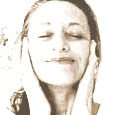
Restorative Link Yogassage Yin-Form Positional Release Training
dates tba call or email for info 860 395 0282
Restorative Link Yogassage therapy combines passive and active positional release techniques with breath work and various hand skills. It integrates Taoist, Meridian and Acupuncture theories with the Ayurvedic massage theories of India and Orthopedic Manual Massage techniques of the West.
INTRO
Restorative Link Yogassage is not another new or “Brand” Name of massage. It is part of a larger concept of massage that has its origins in the perennial philosophies of the East: namely Taoism and Ayurveda. The fundamental tenet of Taoism is that all things can be described, understood, and experienced by their mutually complementary and opposite attributes.
The “DIUNE” theory of Taoism is comprised of “Yin” and “Yang”: which may be used to describe all things we are capable of experiencing, whether they are forces in nature, our thoughts, relationships, careers, or our bodies.
A simple example of Taoist thought would say, “There is always a front and back to a coffee cup, but the only way to experience both sides at the same time is to be at its center. The exposed part of the cup is Yang. The concealed part is Yin. Both are necessary to form the cup.”
Or, consider the fact that inhaling and exhaling are opposite movements. Inhaling is “Yang”. Exhaling is “Yin”, but together you are alive. A Taoist analysis of massage therapy emphasizes the crucial differences between what I refer to as “Yin” and “Yang” tissues of the body.
Similarly, the Ayurvedic analysis of massage therapy distinguishes the structural tissues of the body by their energetic tendencies. Muscles and blood, for example, are, in the Taoist, view considered “Yang”.
From the Ayurvedic standpoint, muscles and blood are considered “Pitta”. Both traditions recognize attributes common to muscles and blood such as: heat, movement, dynamic excursion, strength, and impact- producing upon exertion.
By contrast, connective tissues and joints are “Yin”, in the Taoist way, or “kapha”, and/or “vata” (respectively) to Ayurvedic practitioner.
dates tba call or email for info 860 395 0282
Restorative Link Yogassage therapy combines passive and active positional release techniques with breath work and various hand skills. It integrates Taoist, Meridian and Acupuncture theories with the Ayurvedic massage theories of India and Orthopedic Manual Massage techniques of the West.
INTRO
Restorative Link Yogassage is not another new or “Brand” Name of massage. It is part of a larger concept of massage that has its origins in the perennial philosophies of the East: namely Taoism and Ayurveda. The fundamental tenet of Taoism is that all things can be described, understood, and experienced by their mutually complementary and opposite attributes.
The “DIUNE” theory of Taoism is comprised of “Yin” and “Yang”: which may be used to describe all things we are capable of experiencing, whether they are forces in nature, our thoughts, relationships, careers, or our bodies.
A simple example of Taoist thought would say, “There is always a front and back to a coffee cup, but the only way to experience both sides at the same time is to be at its center. The exposed part of the cup is Yang. The concealed part is Yin. Both are necessary to form the cup.”
Or, consider the fact that inhaling and exhaling are opposite movements. Inhaling is “Yang”. Exhaling is “Yin”, but together you are alive. A Taoist analysis of massage therapy emphasizes the crucial differences between what I refer to as “Yin” and “Yang” tissues of the body.
Similarly, the Ayurvedic analysis of massage therapy distinguishes the structural tissues of the body by their energetic tendencies. Muscles and blood, for example, are, in the Taoist, view considered “Yang”.
From the Ayurvedic standpoint, muscles and blood are considered “Pitta”. Both traditions recognize attributes common to muscles and blood such as: heat, movement, dynamic excursion, strength, and impact- producing upon exertion.
By contrast, connective tissues and joints are “Yin”, in the Taoist way, or “kapha”, and/or “vata” (respectively) to Ayurvedic practitioner.




No comments:
Post a Comment